9 Modern kitchen flooring ideas to create an on-trend cooking space
Put your flooring centre stage with bright ideas and bold options that are perfect for any modern kitchen
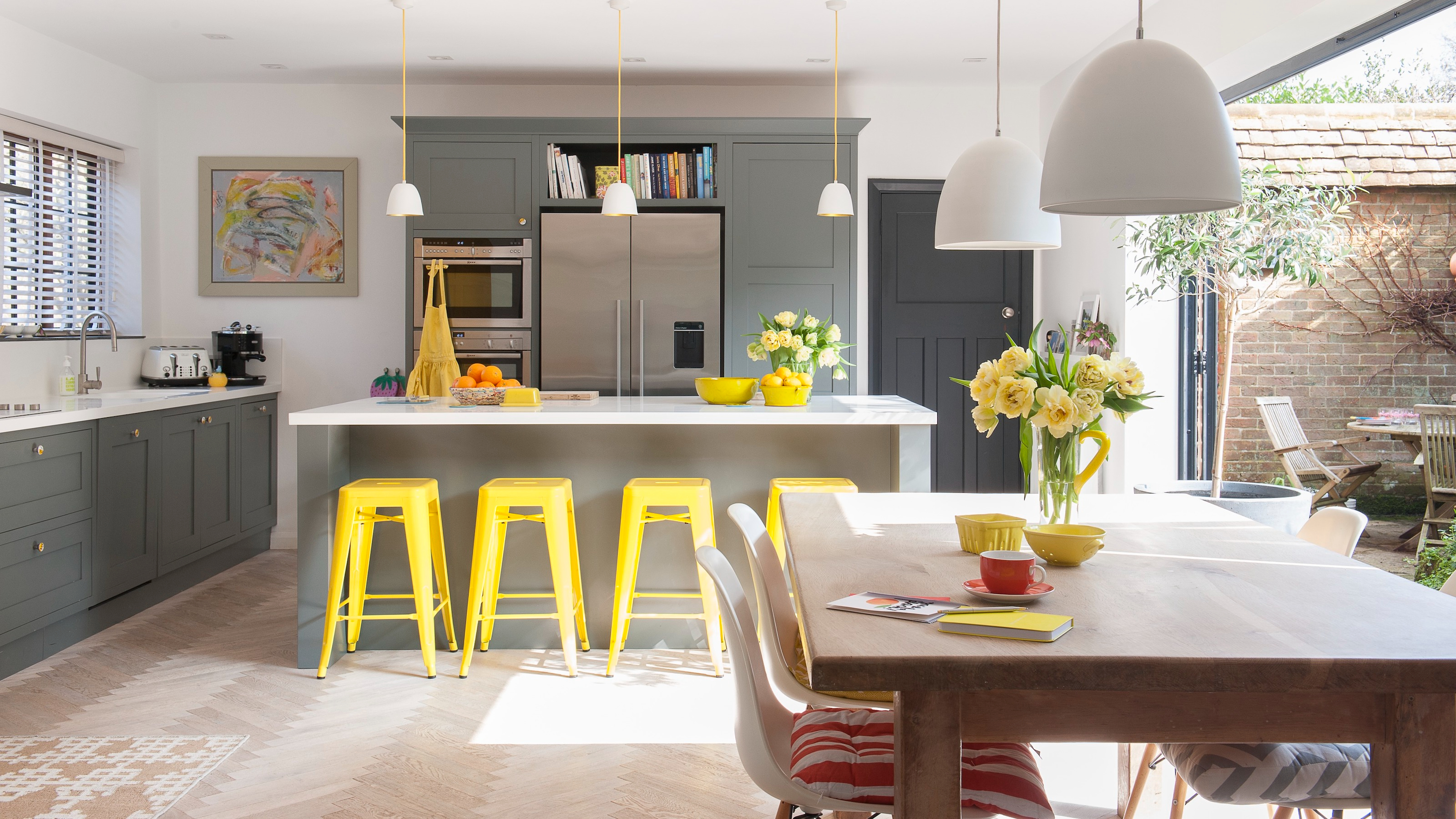
- 1. Consider an industrial touch
- 2. Create flow with continuous flooring throughout
- 3. Zone kitchen space with contrast flooring
- 4. Add warmth with a wood lookalike
- 5. Lead the way with chic chevrons
- 6. Throw some shapes
- 7. Add flair with a playful pattern
- 9. Create a smooth transition indoors and out
- FAQs

Holly Cockburn
Practical and low-maintenace flooring is a must for any kitchen, but if you're big on style too then modern kitchen flooring ideas will be something to consider. Looks play a huge part in a kitchen after all, and making sure something looks as good as it is pratical will create a hub that you want to spend time in. Modern kitchen style is all about sleek lines and streamlined surfaces, so choosing kitchen flooring ideas that reflect this is key.
Natural materials will complement a modern kitchen without dominating the space and can bring a plush, luxury vibe, whether honed marble, oiled timber or polished stone. Or for a bolder look, opt for modern kitchen flooring in a striking colour, eye-catching pattern or interesting tile layout to make the flooring the focal point of the room.
Modern kitchen flooring ideas
‘As one of the main unifying points of your kitchen design, your choice of flooring will have a big impact on the overall look and feel of the space, so it's essential to get it right,’ says Darren Watts, design director at Wren Kitchens. ‘Tiles are a natural choice when it comes to kitchen flooring. Hugely versatile, tiles look great in modern kitchens, helping to keep the space feeling clean, clear and contemporary. And one big benefit of a tiled floor is that they're very easy to maintain, with most stains, marks and spills simply wiping off.’
1. Consider an industrial touch
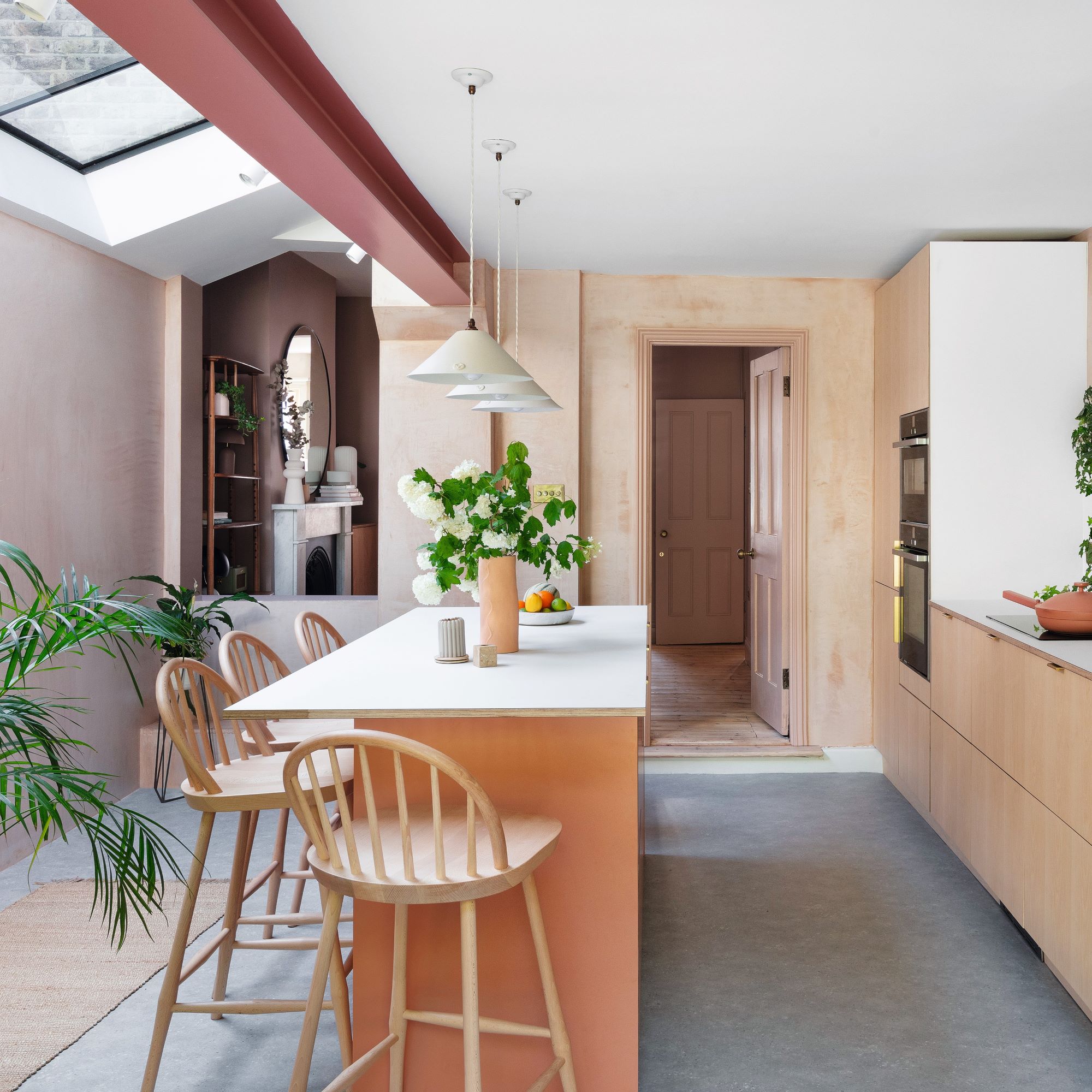
If a modern kitchen is the look you're after, then reduce any visual distraction by opting for simple, neutral flooring. Concrete is a particularly trendy option, so if you're a fan of adhering to the latest kitchen trends then it's a great way to add an industrial touch to a Scandi scheme.
To prevent it from looking too stark, add subtle colour through kitchen cabinets and plenty of natural materials with light wood on the walls and worktops.
2. Create flow with continuous flooring throughout
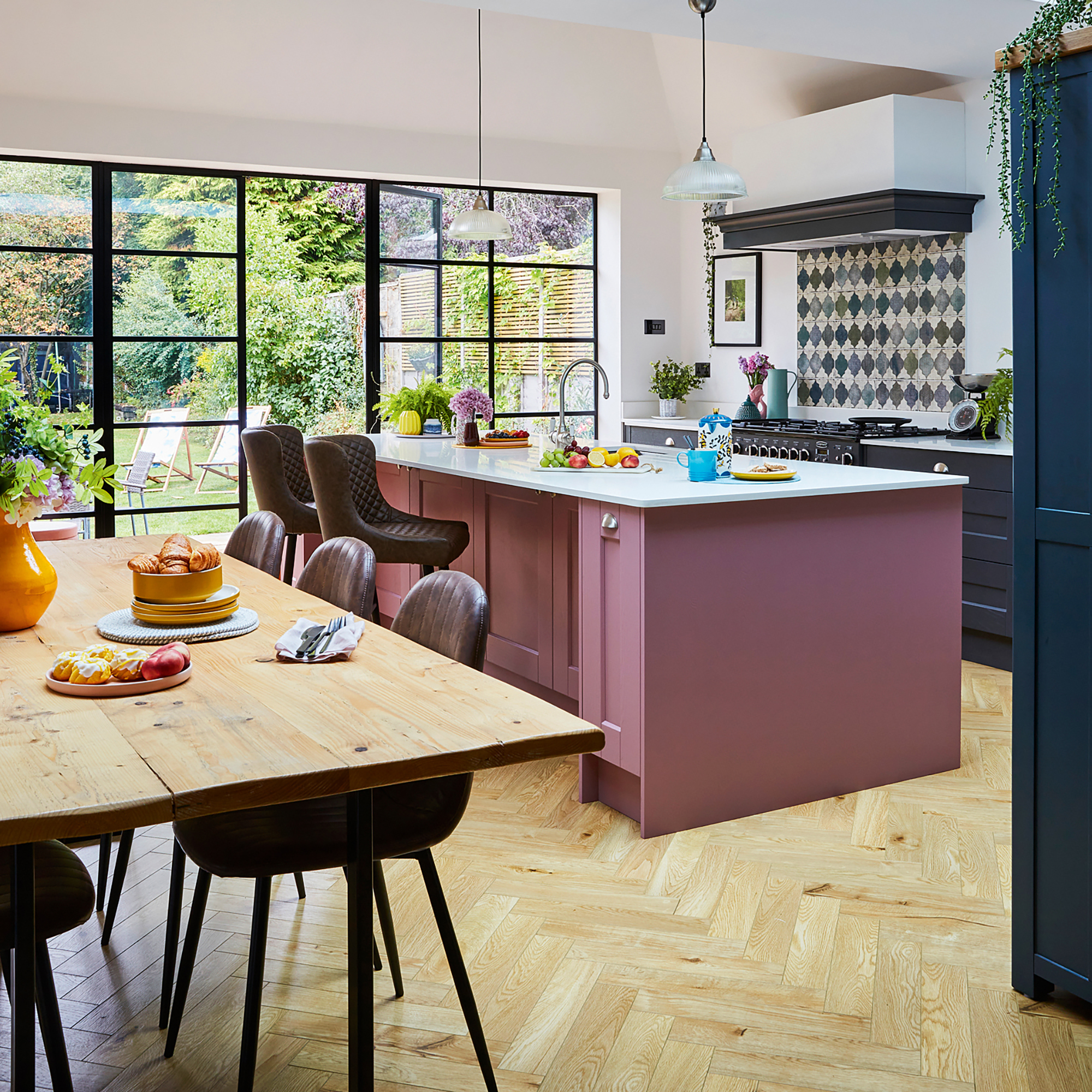
Continuity is key in an open-plan kitchen and dining area and using the same flooring throughout will help tie the two spaces together. Large-format kitchen floor tile ideas look less busy than using small tiles over a large area and keeping grout lines in a paler shade will create less of a visual distraction for a clean, uninterrupted effect.
‘Choose the same tile shade across walls and floors to create a seamless feel and give the illusion of space,’ says Kamila Swiatecka, Marketing and Brand Manager at Tile Giant. ‘Gloss floor tiles maximise the light, whereas matt finish tiles are a practical choice for high traffic areas, working well for kitchens, hallways and open-plan family spaces alike.’
Get the Ideal Home Newsletter
Sign up to our newsletter for style and decor inspiration, house makeovers, project advice and more.
3. Zone kitchen space with contrast flooring
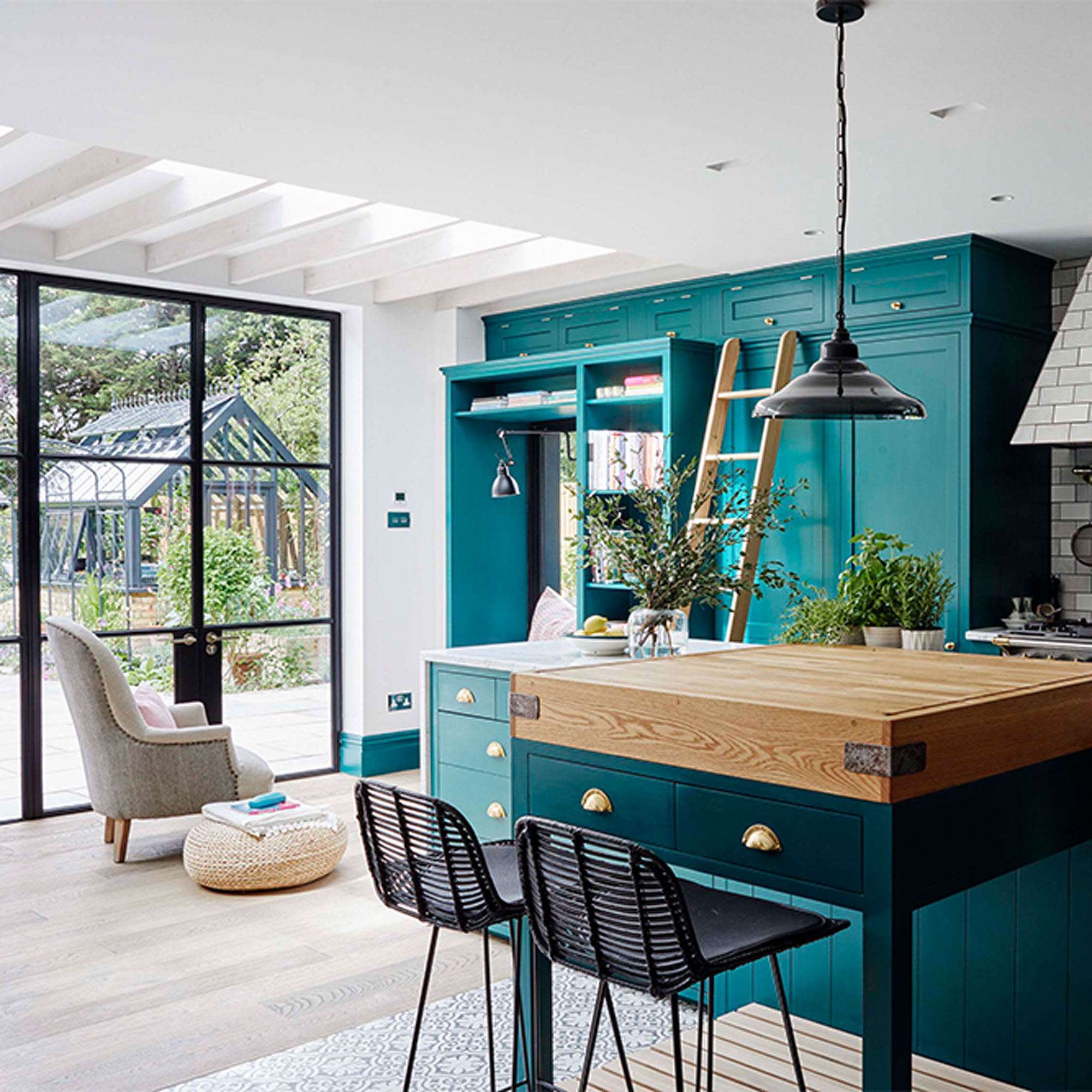
If an open-plan kitchen feels too large and lofty, try an alternative treatment and break the space down into smaller zones for a cosier feel. Using different flooring in key places helps define different parts of the room visually so that it doesn’t feel like one vast, empty space.
Kitchens, dining areas and living rooms all put different requirements on flooring, so take this into account when choosing flooring for an open-plan space. Opt for flooring that’s hardwearing and easy-clean in a kitchen area, as opposed to something softer and warmer underfoot in a living room zone.
4. Add warmth with a wood lookalike
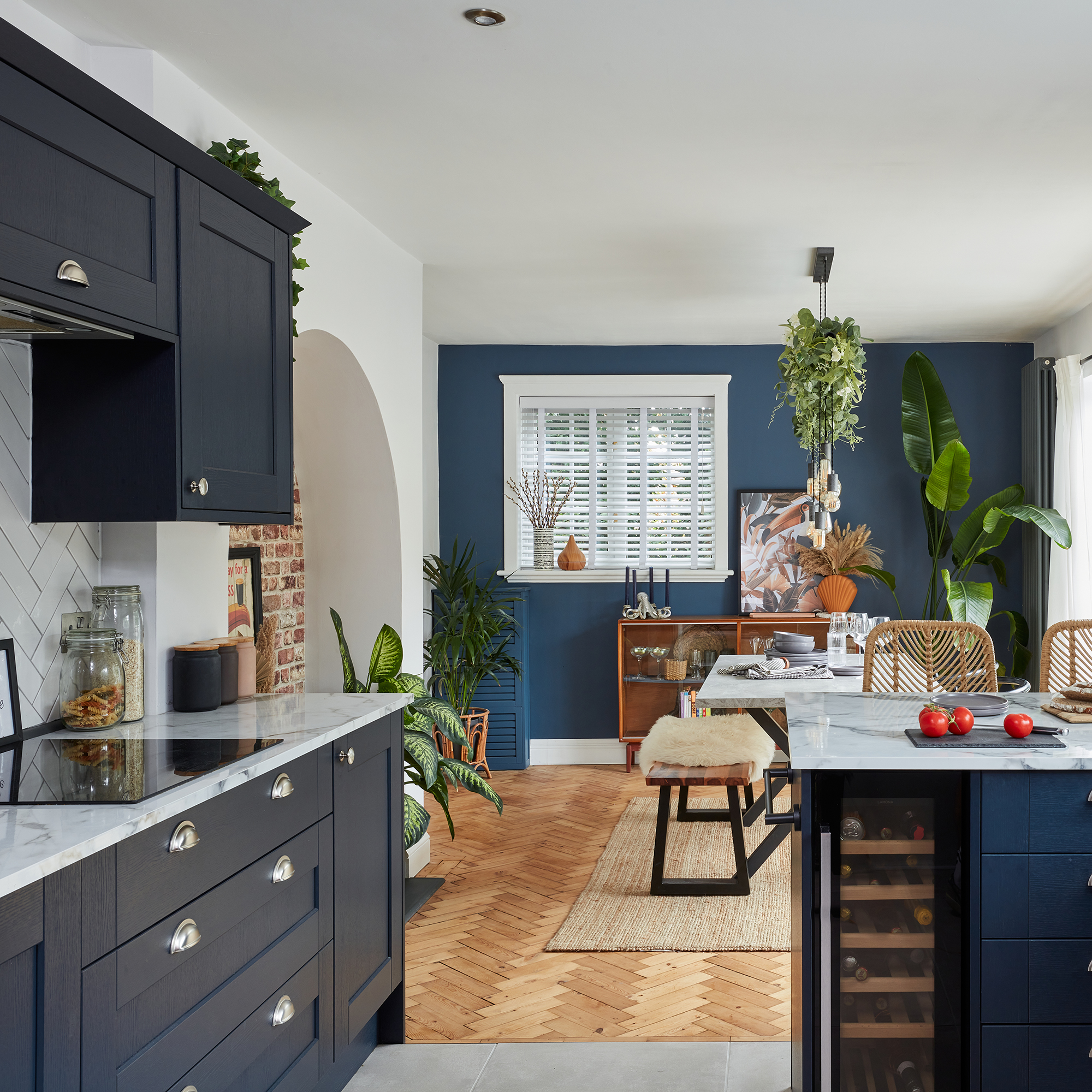
Timber flooring can add colour and character to a modern kitchen and warmth to a cool, all-white colour scheme, but real wood isn’t advisable in humid spaces like kitchens, due to its tendency to warp and buckle. For a convincing alternative, why not consider a wood look-alike tile? Made from either ceramic or porcelain and in a realistic-looking plank-style format, wood-effect tiles won’t scratch or colour-fade like real wood and are far easier to clean and maintain.
Choose a plank size that suits the proportions of your room. The narrower the plank, the busier the space will look; the wider the plank, the cleaner the effect. Run planks horizontally along the length of the room and following the direction of windows or bi-folds. This will draw the eye from side to side and help to elongate the space.
5. Lead the way with chic chevrons
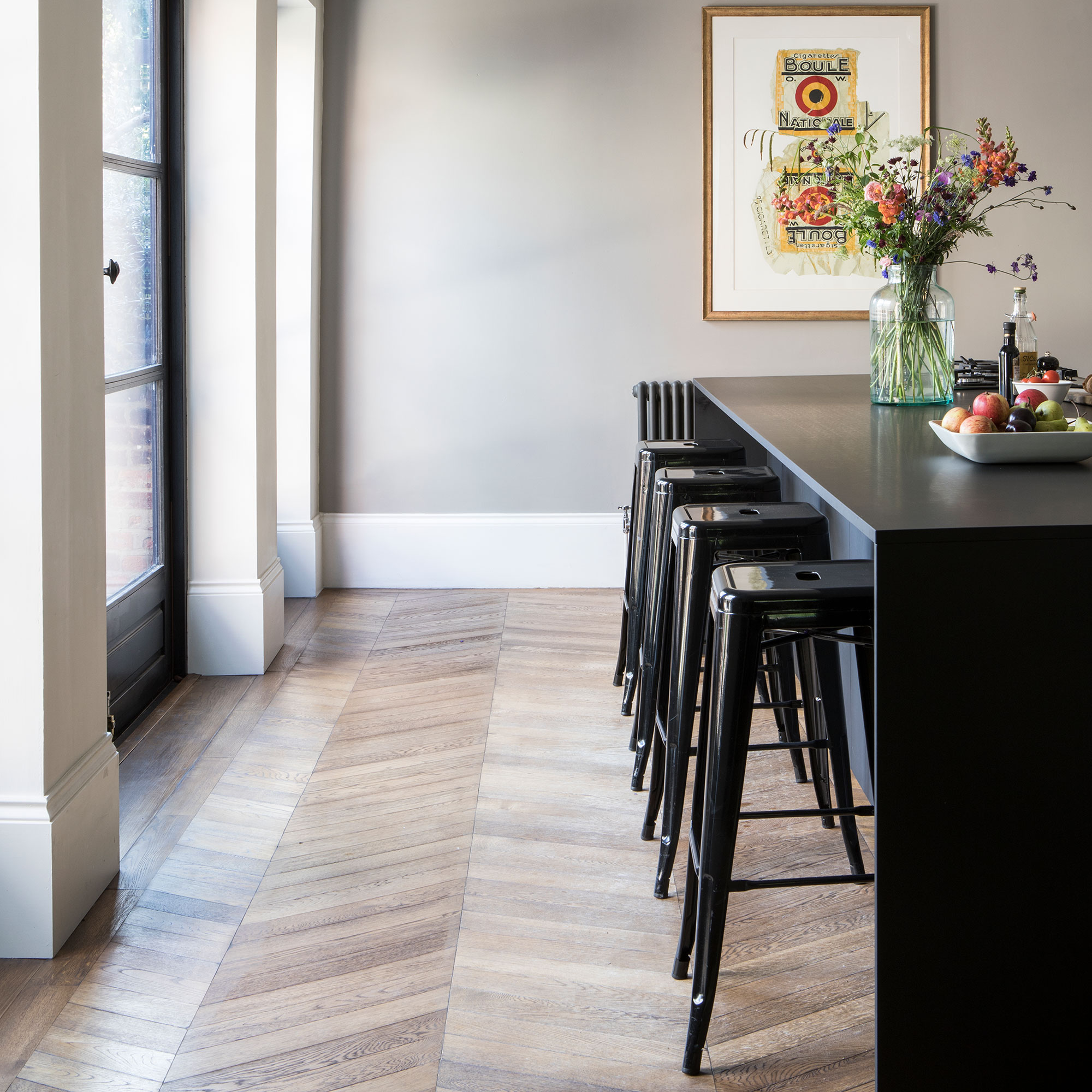
Laminate flooring is another cost-effective and durable alternative to real wood that is more suitable for humid spaces such as kitchens and utility rooms. Warmer and softer underfoot than tiles, laminate is more forgiving too if china or glassware is accidentally dropped on it.
Opt for on-trend chevron-style planks in a washed wood effect to create a chic look in a modern kitchen. The direction you lay chevron flooring can have an effect on the proportions of a room visually. Lay the chevron pattern in the direction of the longer side of the room and the room will feel even lengthier. But lay them across the floor widthways, and the room will appear wider.
6. Throw some shapes
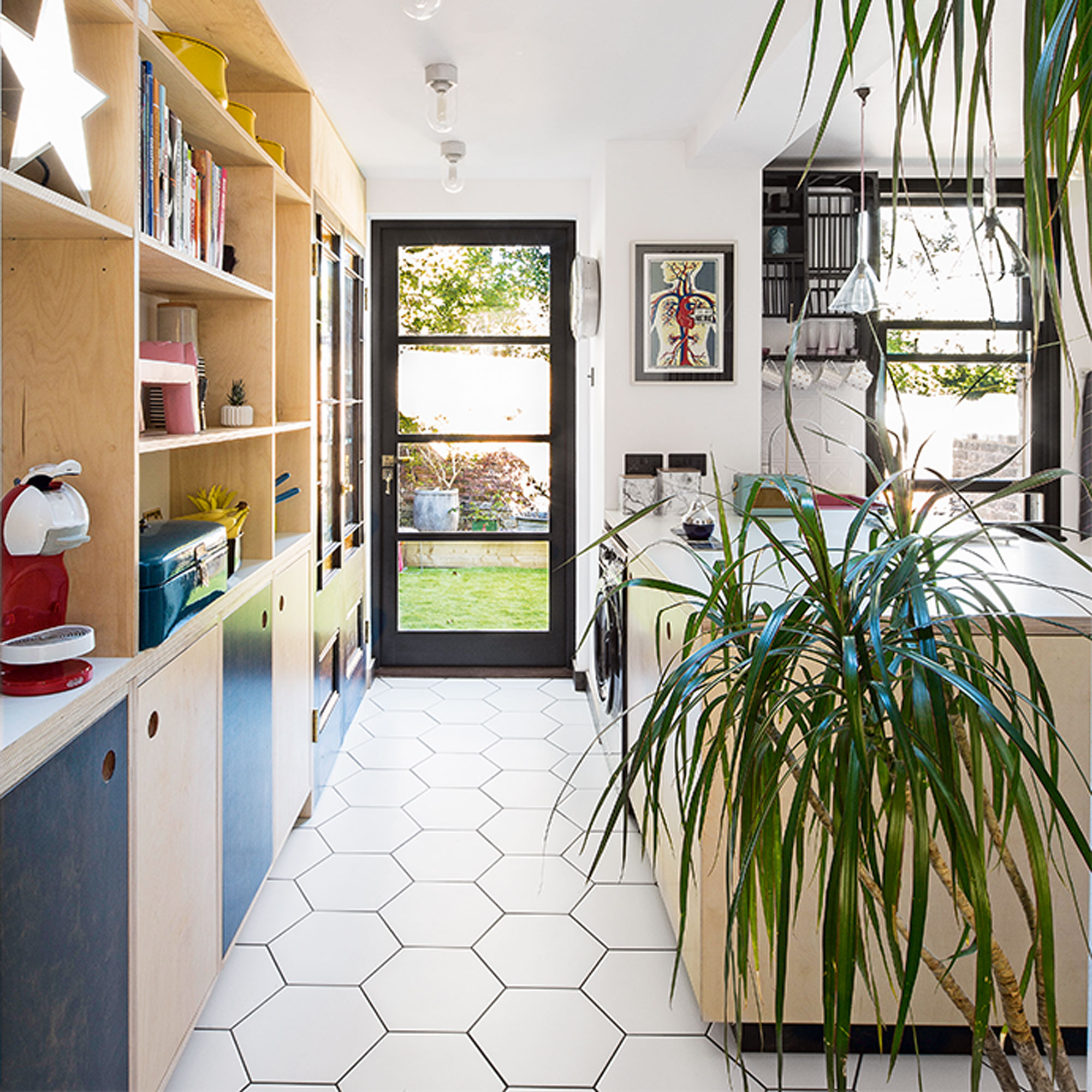
Opting for hexagonal floor tiles is a great way of working pattern and interest into a modern kitchen scheme if you don’t want to commit to boldly patterned tiles or bright colours. Try a plain white hexagonal tile with dark contrast grout lines to create a striking honeycomb effect, or try adding in a coloured tile here and there to add a random splash of colour.
Hexagonal tiles can also be used to create a mosaic effect, using tiles in a subtle mix of toning shades. Or try using hexagonal tiles to help transition between a tiled floor and wooden floor, using hexagonal tiles to gradually merge and transition between the two areas.
7. Add flair with a playful pattern
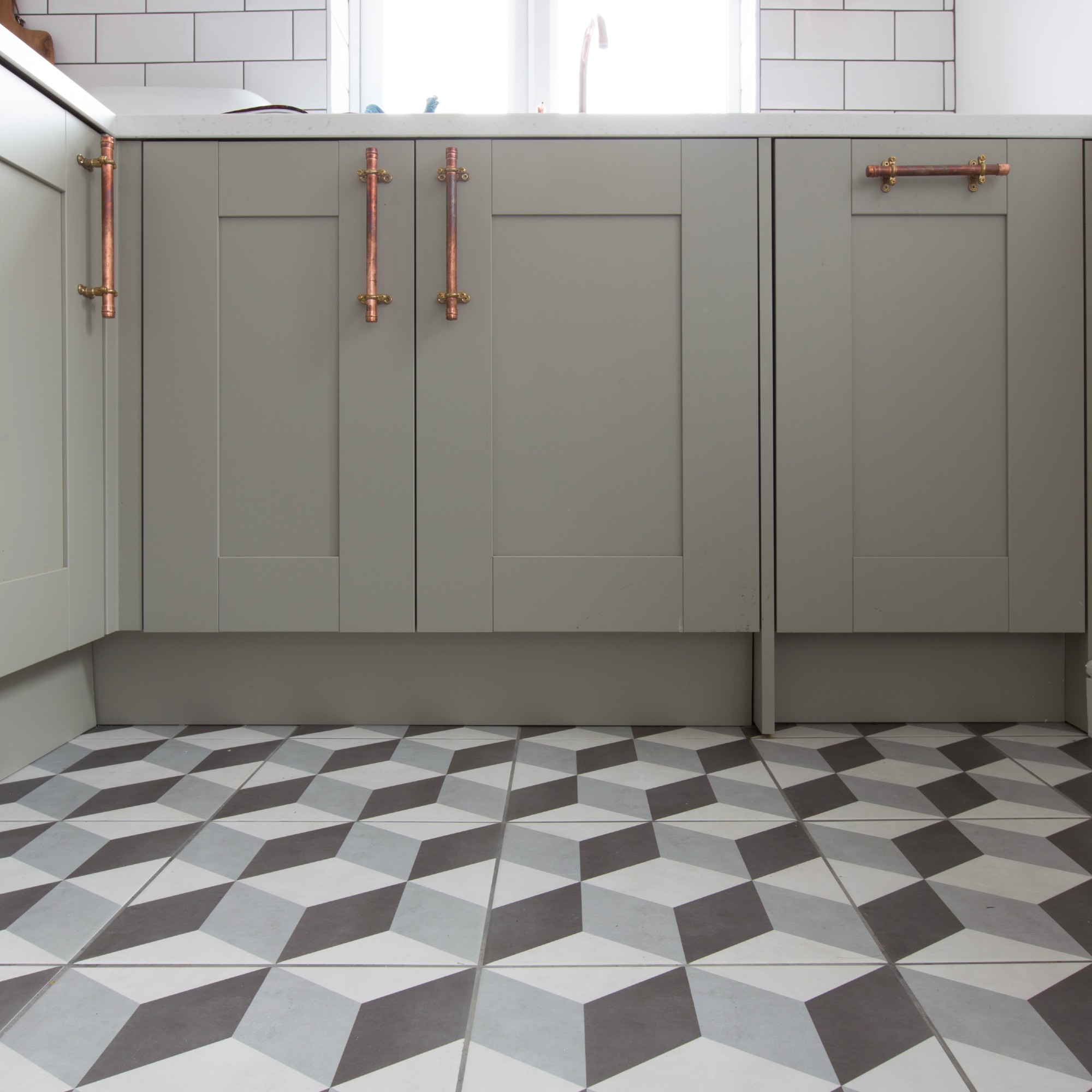
Clean lines and hard surfaces can be quite harsh and unforgiving, but introducing a lively pattern colours is a fab way of making a modern kitchen feel softer and more user-friendly.
A bold, statement floor adds more impact than a tiled kitchen splashback and choosing accent colours that are repeated around the kitchen on doors, panels and accessories helps to tie the whole colour scheme together.
9. Create a smooth transition indoors and out
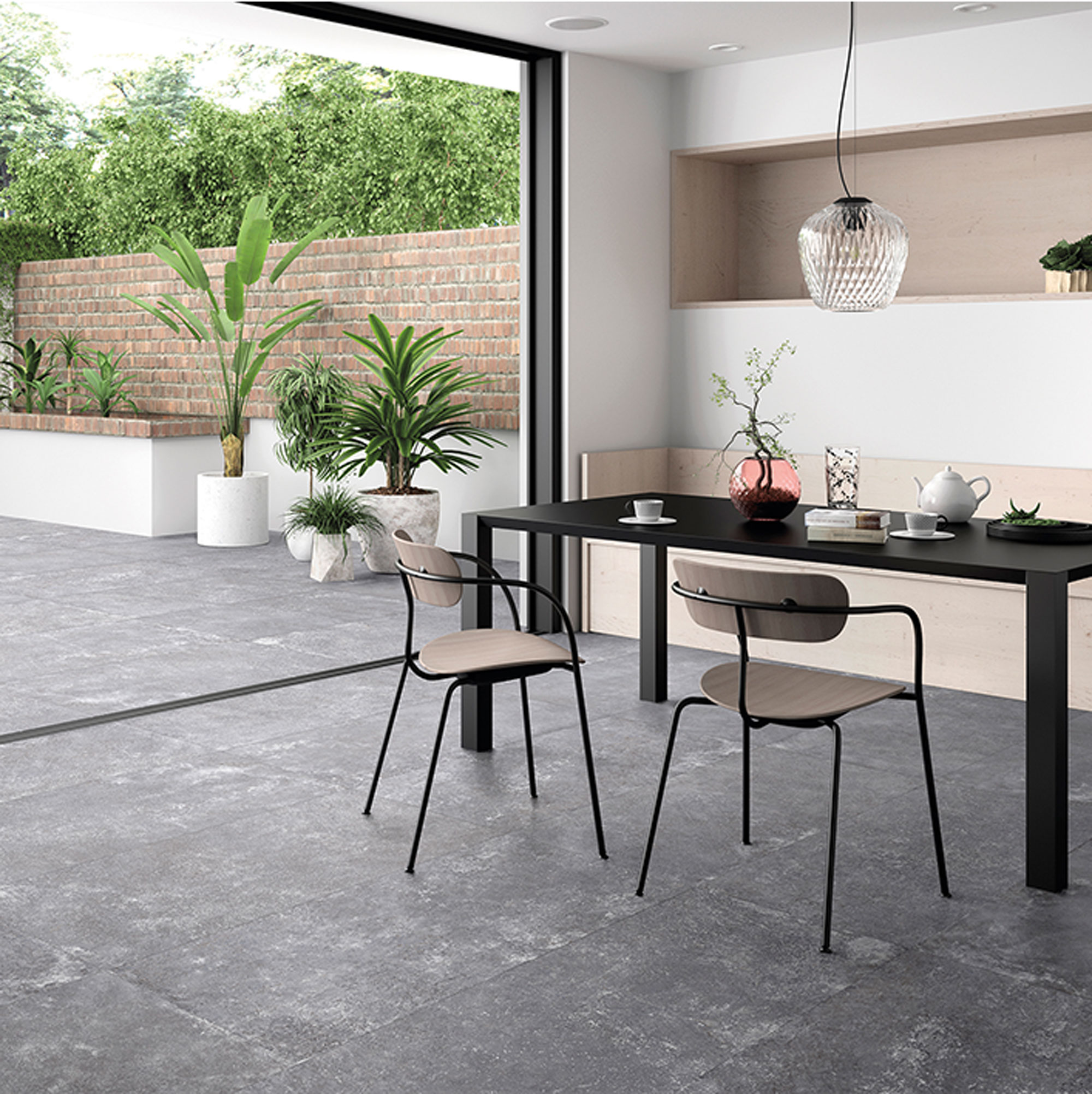
Bridge the gap between indoor and outdoor spaces by using the same flooring throughout a downstairs space. Lots of brands now offer internal and external porcelain tiles in the same colour and finish, but different thicknesses, to create a seamless look that allows the space to work as one.
Hidden guttering can also be integrated into the floor at the threshold point to create a smoother transition. Using the same flooring throughout will make the space feel bigger as the eye will flow from area to area without the disruption of thresholds.
FAQs
What is the best flooring to have in a kitchen?
Practicality is key when it comes to kitchen flooring. Busy kitchens are prone to splashes and spills, while heat, steam and grease from cooking will all add to the pressures that flooring has to cope with, so opting for a flooring that is easy to keep clean and low-maintenance to care for is a must.
Smooth floorings like vinyl, lino and laminate are all relatively easy to wipe clean and maintain and are comfier underfoot than many hard floorings. Porcelain and ceramic tiles that are pre-sealed are also easy-clean and low-maintenance and impervious to moisture penetration too, so a good option for a kitchen, though not as forgiving if crockery and glassware is dropped on to the surface.
While natural stone, slate and terracotta are all durable and hardwearing materials, the surface is permeable, so will stain and mark easily, so any of these options will require sealing after installation and on a regular basis afterwards too.
What is the most hard wearing flooring for kitchens?
Porcelain and ceramic tiles are the go-to option for kitchens when it comes to durability and practicality. Super-tough, hardwearing and waterproof, and impervious to scratches and stains, if installed, grouted and sealed properly, a tiled floor should last a lifetime. While natural stone is hardwearing, it does require more care than porcelain or ceramic tile and will need sealing at regular intervals, but with proper care, is another tough choice that will give character and warmth to any kitchen.
When it comes to timber flooring, real wood isn’t recommended in areas that might come into close contact with water, such as kitchens and utility rooms as excess water will make wood swell, warp and buckle. Wood-effect laminate, vinyl or tiles are a better option, giving the warmth and character of real wood but with the practicalities and harder-wearing properties of porcelain tiles.
Which style takes your fancy?

Lisa is Deputy Editor of Style at Home magazine and regularly contributes to sister title Ideal Home. She has written about interiors for more than 25 years and about pretty much every area of the home, from shopping and decorating, crafts and DIY to real home transformations and kitchen and bathroom makeovers. Homes and interiors have always been a passion and she never tires of nosying around gorgeous homes, whether on TV, online, in print or in person.
- Holly CockburnContent Editor
-
 Will a conservatory add value to your home and how can you maximise it?
Will a conservatory add value to your home and how can you maximise it?This is what the pros say
By Amy Reeves
-
 I’ve been looking for a new signature scent for my home and The White Company's new fragrance is the exact summer holiday smell I needed
I’ve been looking for a new signature scent for my home and The White Company's new fragrance is the exact summer holiday smell I neededSantorini smells fresh, summery and sophisticated
By Kezia Reynolds
-
 How to remove algae from garden walls in five steps – and the cleaning product experts rave about for tackling it fast
How to remove algae from garden walls in five steps – and the cleaning product experts rave about for tackling it fastExperts share their top tips for getting garden walls algae-free
By Katie Sims